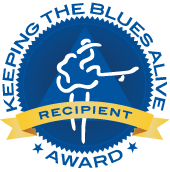 Hope Radio
Hope RadioRonnie Earl & the Broadcasters
Stony Plain Recording Co.
www.stonyplainrecords. com
11 tracks/ 78:23
On his fourth release for Stony Plain, Ronnie Earl is turned loose on a live audience for an amazing live, all-instrumental recording that will dazzle you with sparkling musicianship. Earl and his crack band are able to explore a wide range of emotions without the help of a vocalist and keep your attention the entire time. The audience certainly appreciated the efforts of Jim Mouradian on bass, Michael "Mudcat" Ward on bass and piano, Lorne Entress on drums plus Dave Limina on piano and Hammond B3 organ. These guys have been backing Earl for a number of years and it shows in tight foundation they create on every track. Limina shines on the B3 every time he touches it and proves on his solos that he is Earl's equal.
It's hard to single out specific tracks for attention on a disc filled with gems. "Katrina Blues" catches your ear by virtue of being a solo acoustic performance by Earl, who plays with a simmering intensity that captures the despair, and hope of rebirth, of the terrible storm. It is followed by "Wolf Dance", a tribute to Wowlin' Wolf that uses the familiar riff from "Smokestack Lightning" as a starting point for one of Earl's exceptional explorations of the blues guitar tradition.
"New Gospel Groove" opens the disc with Earl's guitar spitting out notes over thick chords from Limina's Hammond organ. At times, this cut resembles the sound of the original Santana band, albeit without the extra percussion. Even though he grew up on the East Coast, Earl quickly demonstrates on "Blues for the West Side" that he would be able to handle himself on the stage of any blues club in Chicago. The band builds to an emotional peak before dropping way down to give Earl a chance to prove he is just as effective at low volume levels. On "Blues for Otis Rush", Earl captures the spirit of the legendary Blues guitarist without imitating Rush's style. It is another tour de force performance by Earl that commands your undivided attention.
The final track brings the proceedings back to church with "New Gospel Time". Whether he is burning up the fretboard or carefully picking out just the right note , Earl consistently plays with emotional depth, speed and precision without even a hint of showboating. The Broadcasters match his every move to make this a must-hear recording. Too bad Earl's health does not allow him to tour - I'd love to hear this band live. At least I have Hope Radio to remind me of what I am missing !!!



 Play It Til Tomorrow
Play It Til Tomorrow






